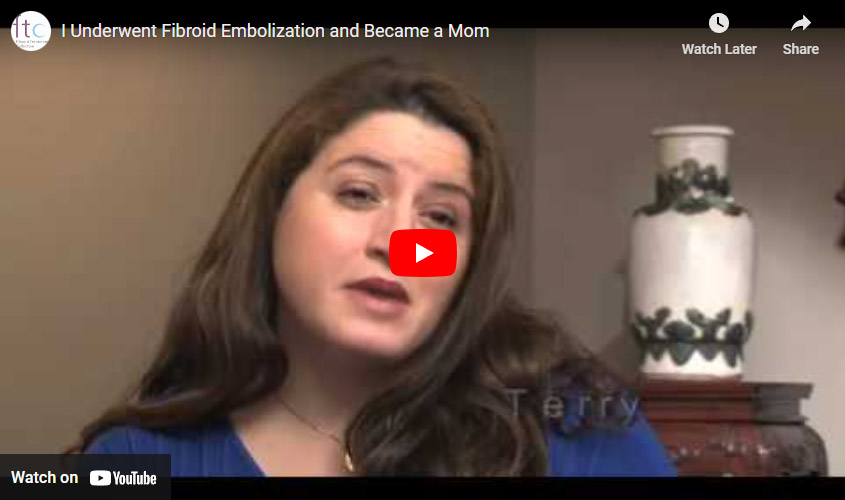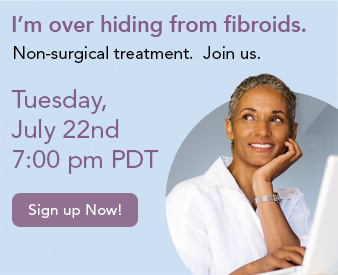Fibroids and Infertility
It’s a medical fact that most women will have fibroids during their lifetime. A recent study by womenshealth.gov states: about 20 to 80 percent of women develop fibroids by the time they reach age 50. Usually, fibroid development occurs when a woman is in her thirties and forties. In the past, women of this age would have already completed a family. But today, many women have children later in life. It’s common to start a family in your thirties or even forties, rather than in your twenties. This makes understanding the potential relationship between fibroids and infertility very important.
How do fibroids hurt the ability to have a baby?
Let’s start with the positive part. Many women will have fibroids that won’t hurt their chances of having children. The fibroids may stay small, or occur in areas that don’t affect the reproductive system. But certain fibroids will have a profound effect on the ability to conceive, stay pregnant and carry a baby to term.
Depending on where they are located, fibroids may prevent sperm and egg from meeting for conception. Fibroids can hamper the ability of an embryo to implant. They often grow in places or to sizes that make it challenging for a pregnancy to continue. Fibroids may even affect the health and welfare of the fetus.
How do fibroids hurt the ability to have a baby? The answer has a lot to do with where in the uterus the fibroids are located.
Fibroids can reduce your fertility in these ways:
- Fibroids that change the shape of your cervix can affect the number of sperm able to enter the uterus.
- Uterine fibroids that block the Fallopian tubes can make the journey of a fertilized egg to implantation difficult or impossible.
- Fibroids which change the shape of your uterus may decrease the number of places an embryo can successfully implant or reduce uterine space needed for embryo development.
- Fibroids that weaken the lining of the uterine cavity or decrease the blood supply to a growing embryo can cause miscarriage.
You have fibroids. You want children. Now what?
If you are already pregnant, you want to be sure any fibroids present are monitored by your OB/GYN or fibroid surgeon. Sometimes, as the baby grows, so will the fibroids. This can create issues for pregnancy and delivery. It’s important that your pre-natal care includes a sharp medical eye on existing fibroids and their development.
If you have fibroids and are trying to get pregnant, it’s important to discuss with your doctor whether the fibroids are in places that might prevent you from doing so, or are in places that could cause complications in pregnancy. That being said, fibroid treatment is usually recommended.
If my best chance for a successful pregnancy is fibroid treatment, what are the options?
Removing fibroids to improve the chance for conception and pregnancy may be recommended to you. Often, a doctor will suggest a surgery called ‘myomectomy’. Myomectomy cuts out existing fibroids. While this form of fibroid removal is fairly common, it has several drawbacks.
- Surgery to the uterus may cause scarring. Uterine scarring can make the successful implantation of an embryo problematic.
- If any part, even a few cells, of a fibroid are left behind, that fibroid will have a 50% chance of regrowth within a period of about 10 months. This makes your window of opportunity for conception and pregnancy very limited.
- If you have a myomectomy and don’t get pregnant fairly quickly, you could wind up facing multiple surgeries as fibroids repeatedly grow back.
- Surgery to the uterine walls can also weaken them. Sometimes, this compromises carrying a baby to term and/or it’s delivery.
Is there a non-surgical approach that ends fibroids and aids my fertility?
Yes. It’s called Uterine Fibroid Embolization. Embolization shrinks fibroids instead of cutting them out. It is a minimally invasive, non-surgical procedure. It works by blocking the blood supply to each fibroid, ending its ability to thrive and grow. Embolization doesn’t involve cutting or cause any scarring. And embolization is extremely precise. It addresses only fibroids, leaving all other tissue healthy and whole. As the fibroids shrink, so do the fertility problems they create.
Uterine Fibroid Embolization isn’t just a proven, non-surgical solution to fibroid infertility.
- UFE affects only fibroids. The uterus and reproductive organs are left whole, uncut and without scars.
- Embolization ends fibroid growth permanently. Fibroids won’t grow back. Your window for conception and pregnancy is much greater than with surgical treatment.
- Fibroid embolization doesn’t weaken the uterus or uterine lining the way surgery often can.
- Embolization isn’t surgery. The discomfort, risks and recovery time are significantly less than with a myomectomy.
Learn more about Uterine Fibroid Embolization here.
Listen to embolization patients who now have children here.
Embolization Helped Sonia Get Her Confidence Back
As a small woman Sonia couldn’t understand why she could never get rid of her “pooch.” She soon learned it was due to fibroids. After having Embolization, Sonia was able to get her confidence back and feel great in a two piece bathing suit!



